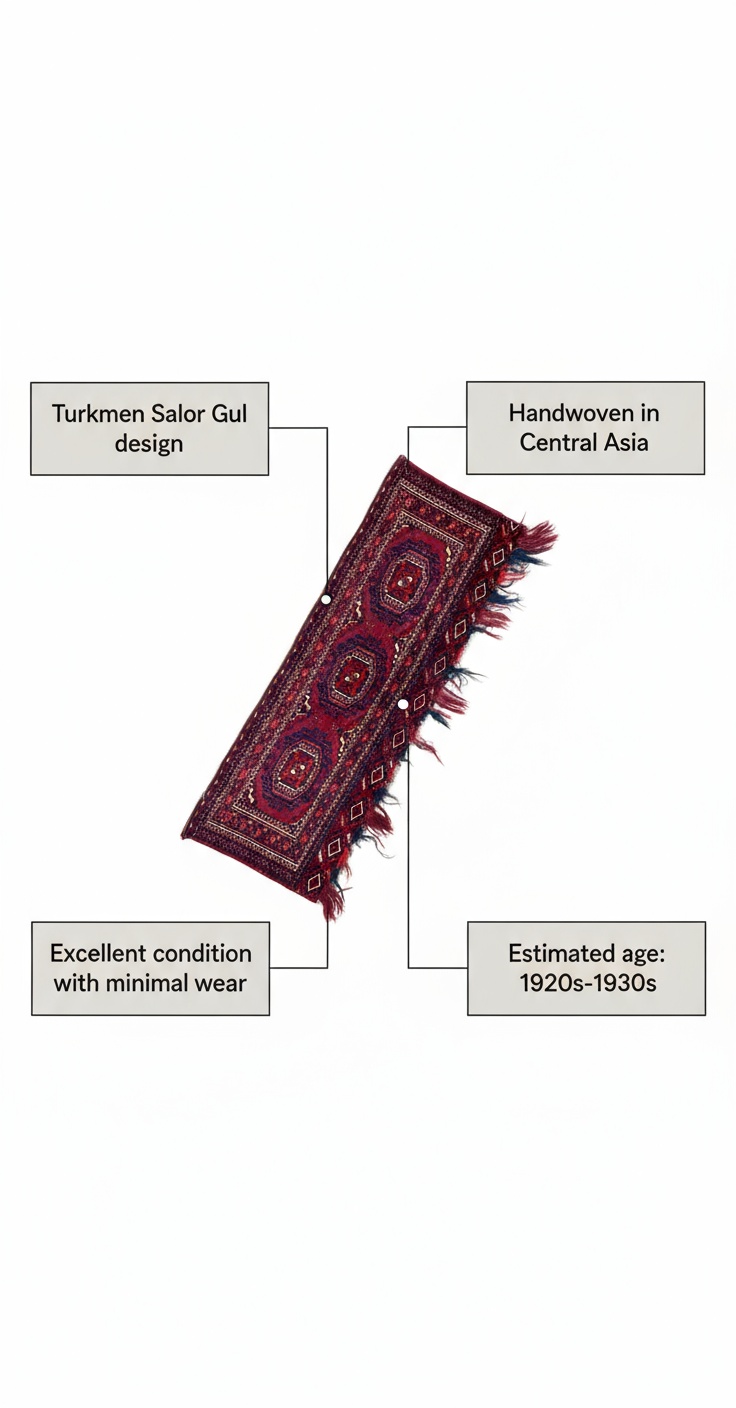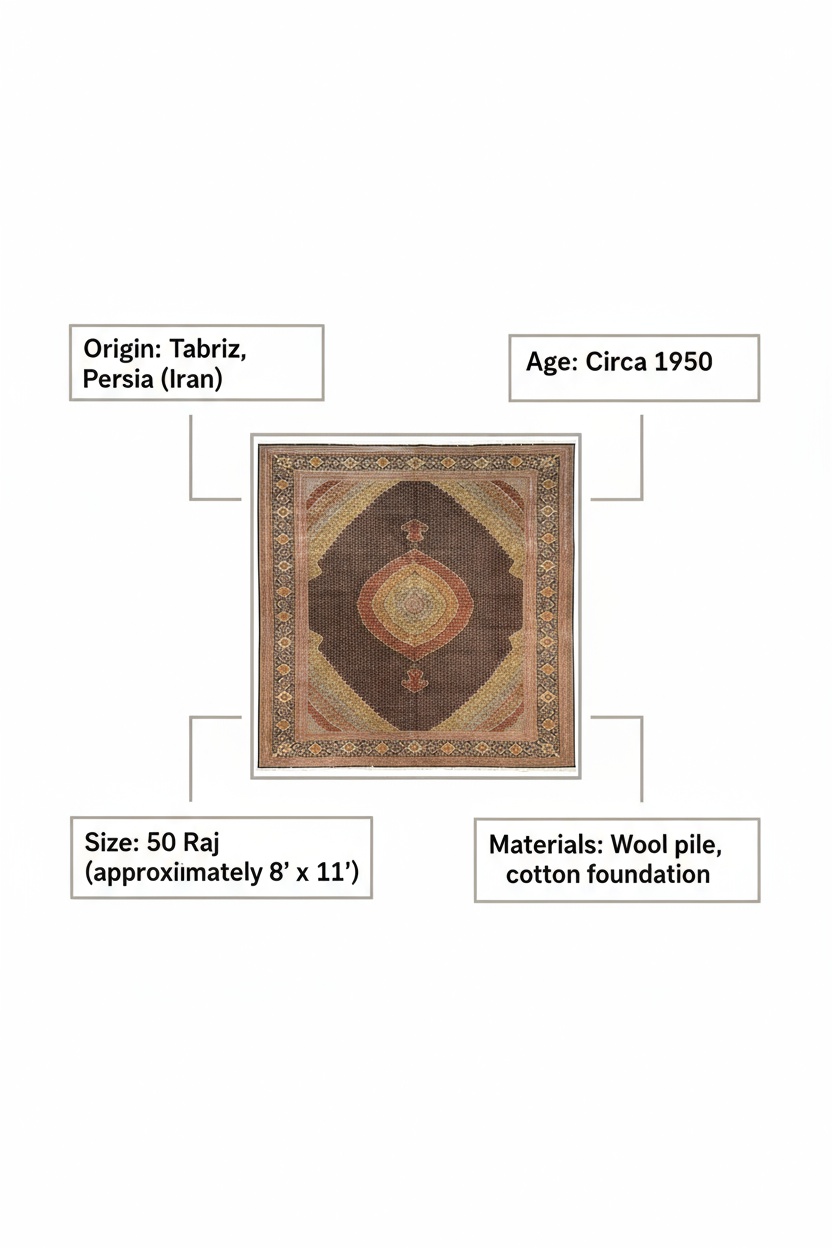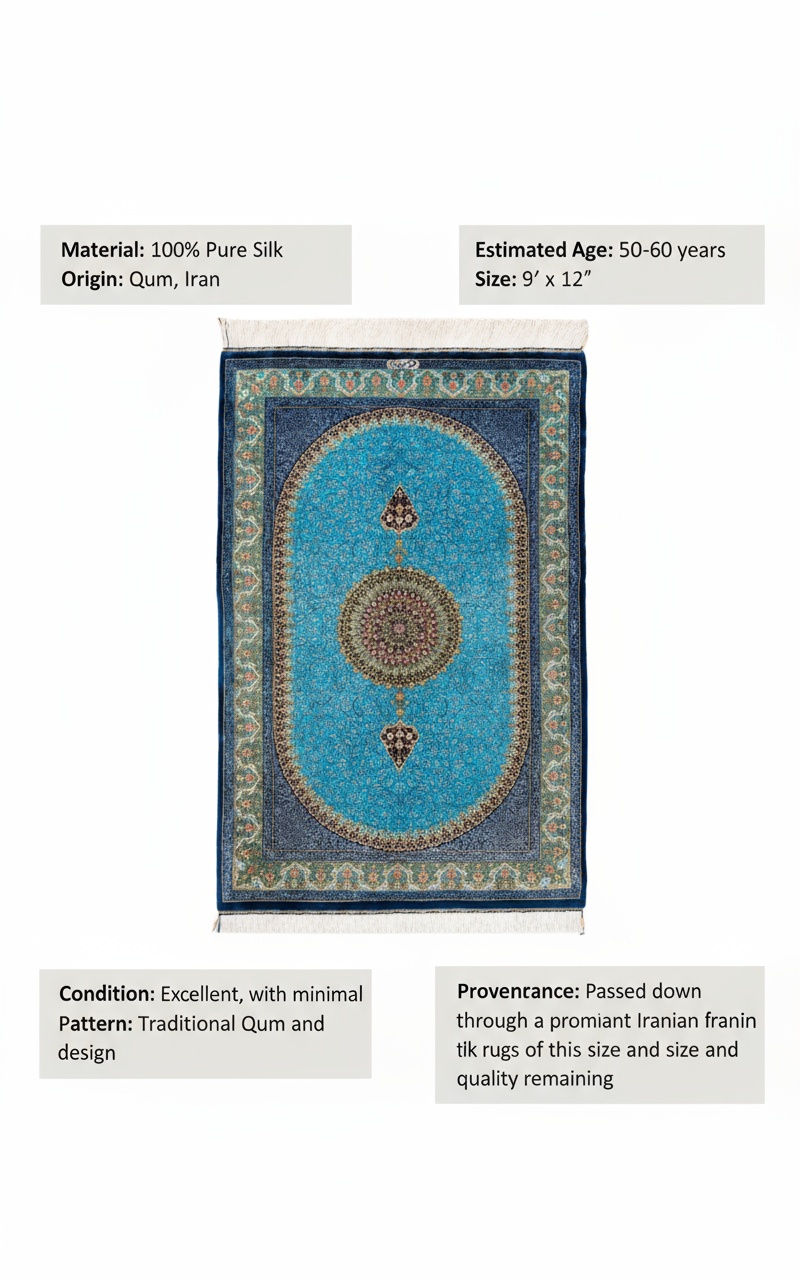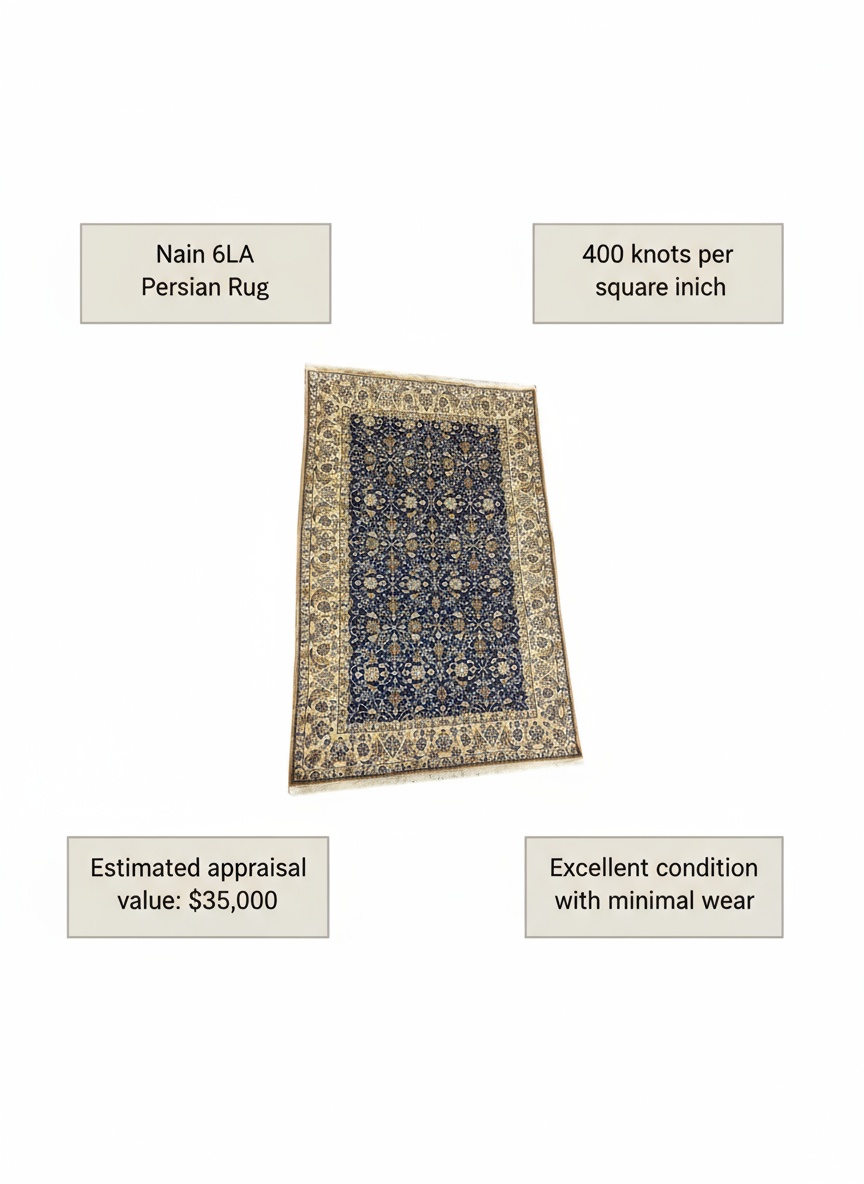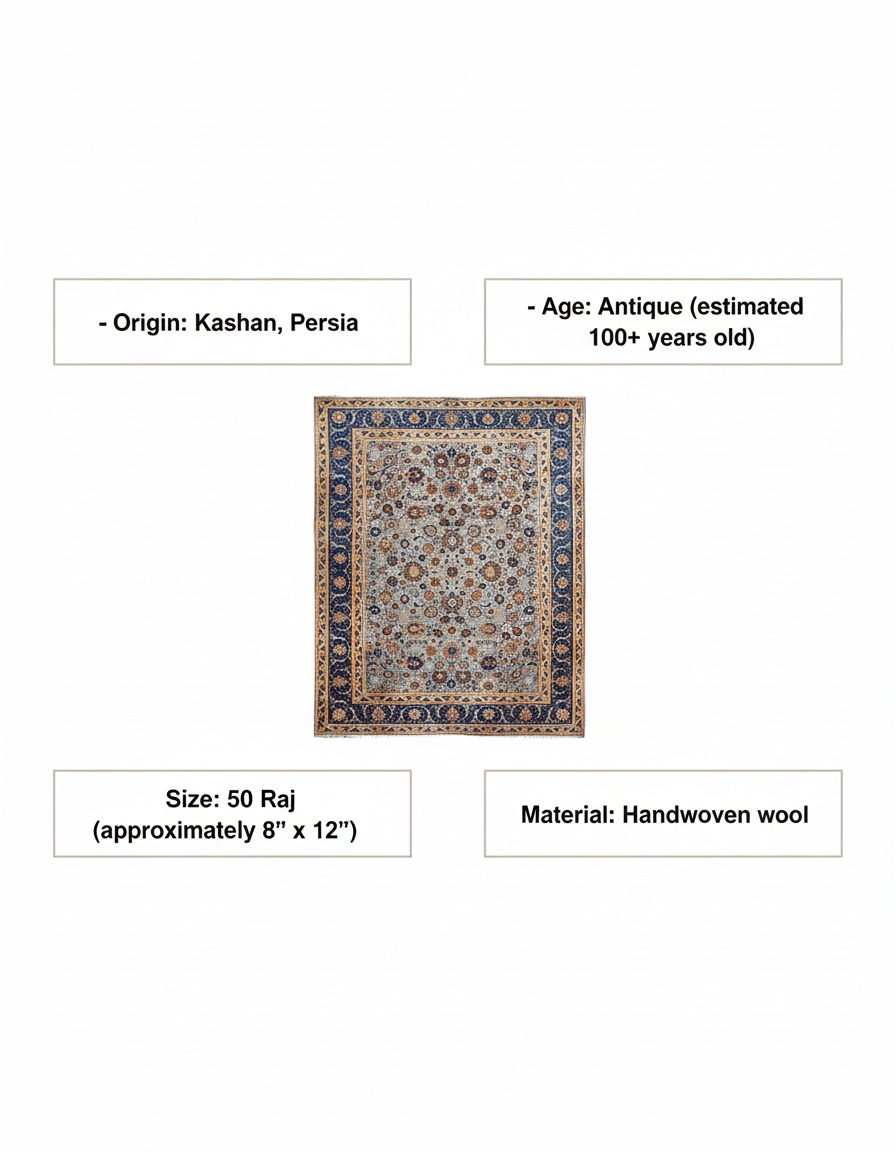<h1>Understanding the Value of a Turkmen Salor Gul Rug</h1>
<h2>What Is a Turkmen Salor Gul Rug?</h2>
<p>A <strong>Turkmen Salor Gul rug</strong> is a handwoven textile treasure from Central Asia, created by the skilled Salor tribe of Turkmenistan and neighboring regions. The "gul" is a distinctive repeated medallion-like motif that serves as a tribal emblem, running across the field of the rug in a precise, geometric pattern. These aren't mass-produced items—each rug represents hours of meticulous hand-knotting using traditional techniques passed down through generations.</p>
<p>What sets Salor rugs apart is their exceptional craftsmanship. The weavers used hand-spun wool and natural dyes derived from plants and minerals, creating rich, warm tones that have deepened beautifully over time. The tight, consistent knotting creates a dense fabric that can withstand decades—even centuries—of use while maintaining structural integrity.</p>
<div class="callout info"><p><strong>Did You Know?</strong></p>
<p>Turkmenistan is world-renowned for its textile traditions, and Salor rugs are considered some of the finest examples of tribal weaving. The country's commitment to preserving these crafts has made it a global hub for serious collectors.</p></div>
<h2>Key Factors That Determine Salor Gul Rug Value</h2>
<p>When you're evaluating your <strong>Turkmen Salor Gul rug</strong>, several critical factors influence its market worth. Understanding these elements will help you recognize what makes your piece valuable—whether you're preparing to sell, buy, or simply protect it with appropriate insurance.</p>
<h3>Age and Authenticity</h3>
<p>The age of your rug directly impacts its value. Antique Salor guls from the <strong>1920s–1930s era</strong> command significantly higher prices than 20th-century reproductions or modern commercial versions. How can you tell the age of a rug? Look for these telltale signs:</p>
<ul>
<li><strong>Natural dye patina</strong>: Authentic pieces display color shifts and fading consistent with age. Synthetic dyes, introduced more recently, appear unnaturally uniform.</li>
<li><strong>Wear patterns</strong>: Antique rugs show wear in ways that reflect actual use over decades, not artificial aging.</li>
<li><strong>Foundation materials</strong>: Earlier Salor rugs often used wool or cotton warps and wefts; later pieces may vary.</li>
<li><strong>Fringe and selvedge condition</strong>: These edges reveal authentic aging better than the central field.</li>
</ul>
<p>To verify authenticity, examine the back of the rug closely. Authentic hand-knotted pieces show slight irregularities in knot spacing and pattern alignment—this is actually a sign of genuine craftsmanship, not a flaw. Machine-made reproductions have disturbingly uniform knots and synthetic fibers that feel different when touched.</p>
<div class="callout tip"><p><strong>Pro Tip</strong></p>
<p>If you're unsure about your rug's age or authenticity, take high-resolution photos of the front, back, fringe, and close-ups of the weave. A qualified rug specialist can provide definitive answers based on fiber analysis and construction details.</p></div>
<h3>Condition and Repair History</h3>
<p>A well-preserved Salor Gul rug with minimal signs of wear will fetch significantly more than a heavily repaired or damaged piece. When evaluating condition, consider:</p>
<ul>
<li><strong>Color vibrancy</strong>: Original, unfaded colors indicate good preservation.</li>
<li><strong>Structural integrity</strong>: Check for loose knots, separations, or holes that compromise durability.</li>
<li><strong>Previous repairs</strong>: While some restoration is normal and acceptable, extensive patching or reweaving reduces value. Be transparent about any work done to your rug.</li>
<li><strong>Pile depth</strong>: A rug that hasn't been worn thin retains more value.</li>
</ul>
<h3>Size and Proportions</h3>
<p>Larger Salor guls command higher prices, particularly when they're proportionally well-balanced. A <strong>6' × 9' Turkmen Salor Gul rug</strong> represents an excellent investment size—large enough to make a statement but practical for most collectors' homes.</p>
<h3>Natural Dyes and Wool Quality</h3>
<p>The use of <strong>natural dyes</strong> and <strong>hand-spun wool</strong> is paramount. These materials not only create superior aesthetic qualities but also signal authenticity and traditional craftsmanship. Natural dyes—sourced from madder root (reds), indigo (blues), and walnut husks (browns)—develop rich patina over time. Hand-spun wool feels different from commercial yarn: it's slightly irregular, lustrous, and wears with dignified aging rather than synthetic brittleness.</p>
<h3>Provenance and Documentation</h3>
<p>If you have records of your rug's origin, previous ownership, or exhibition history, keep them safe. <strong>Documented provenance</strong> significantly increases value and buyer confidence. This is especially true for pieces with clear tribal attribution or those that have been featured in collections or museums.</p>
<div class="callout info"><p><strong>Market Insight</strong></p>
<p>Salor guls with sharp, well-defined motifs, exceptional knotting density, and clear tribal provenance consistently outperform other Turkmen rug types in the collector market.</p></div>
<h2>How Much Is Your Turkmen Salor Gul Rug Worth?</h2>
<p>The value of a <strong>Turkmen Salor Gul rug</strong> varies widely depending on the factors we've discussed. A well-preserved, hand-knotted antique Salor with natural dyes, clear guls, and documented history typically falls in the <strong>$18,000–$25,000 range</strong>, though exceptional pieces can exceed this considerably.</p>
<p>For a more precise valuation, you'll need professional assessment. Here's what to prepare:</p>
<ol>
<li><strong>High-resolution photographs</strong> of the front, back, sides, and fringe</li>
<li><strong>Measurements</strong> (length and width in feet and inches)</li>
<li><strong>Condition notes</strong> describing any wear, repairs, or restoration</li>
<li><strong>Provenance documentation</strong> if available (purchase receipts, exhibition catalogs, inheritance records)</li>
<li><strong>Your best estimate</strong> of when and where the rug was acquired</li>
</ol>
<p>Many online appraisal services accept these materials and can provide a preliminary valuation within 24–48 hours. For items requiring more detailed analysis—or if you need a formal, <strong>USPAP-compliant appraisal</strong> for insurance or legal purposes—an in-person inspection by a certified specialist may follow.</p>
<div class="callout tip"><p><strong>Getting an Accurate Appraisal</strong></p>
<p>Choose an appraisal service that employs specialists certified by respected organizations like the <strong>International Society of Appraisers (ISA)</strong> or the <strong>Appraisers Association of America (AAA)</strong>. These credentials ensure your valuation meets professional standards.</p></div>
<h2>Selling vs. Keeping Your Salor Gul Rug</h2>
<p>Once you know your rug's value, you face a choice: sell it or retain it as a collectible investment. Understanding your options helps you decide.</p>
<h3>Auction vs. Private Sale</h3>
<p>Should you sell your <strong>Salor Gul rug</strong> at auction or through a private sale? Each channel has advantages:</p>
<p><strong>Auction Houses</strong> can reach a wide network of collectors and sometimes drive prices higher for rare, well-documented pieces. However, auction fees (typically 15–20% buyer's premium) and the uncertainty of competitive bidding are considerations. You also have less control over timing.</p>
<p><strong>Private Sales and Dealers</strong> may offer quicker, guaranteed offers. A reputable dealer or collector purchase can close faster, and you avoid auction fees. However, you might receive less than peak market value.</p>
<p><strong>Recommendation</strong>: Before choosing a sales channel, obtain a condition report and professional appraisal. This positions you to negotiate confidently and choose the avenue that best matches your price expectations and timeline.</p>
<h3>Keeping and Maintaining Your Investment</h3>
<p>If you decide to keep your rug, proper care preserves—and often increases—its value:</p>
<ul>
<li><strong>Rotate annually</strong> to ensure even wear</li>
<li><strong>Vacuum gently</strong> with a low-pile vacuum or by hand-brushing</li>
<li><strong>Avoid direct sunlight</strong> to minimize fading</li>
<li><strong>Protect from moisture</strong> and extreme temperature fluctuations</li>
<li><strong>Have it professionally cleaned</strong> every 5–10 years by a textile conservator</li>
</ul>
<div class="callout note"><p><strong>Insurance Considerations</strong></p>
<p>A certified appraisal is essential for insuring your Turkmen Salor Gul rug properly. Update your appraisal every few years to reflect market trends and ensure your coverage reflects current replacement value.</p></div>
<h2>The Role of Professional Appraisals in Your Decision</h2>
<p>Whether you're buying, selling, or preserving a <strong>Turkmen Salor Gul rug</strong>, a professional appraisal anchors all your decisions in market reality. An appraiser with expertise in <a href="/blog/appraising-tribal-rugs-and-textiles-exploring-artistic-traditions-and-techniques">tribal rugs and textiles</a> can assess authenticity, date the piece within reasonable parameters, evaluate condition, and position it within current collector demand.</p>
<p>For high-value items like antique rugs, we recommend working with certified specialists who understand the nuances of Central Asian textiles. Services that use <a href="/">credentialed appraisers</a> ensure your report adheres to professional standards and carries weight with insurance companies, auction houses, and buyers.</p>
<h3>Why Online Appraisals Work Well for Textiles</h3>
<p>Many collectors worry that online appraisals can't capture the full picture of a textile. In fact, high-resolution photography and detailed condition descriptions often provide sufficient information for accurate valuations. Digital submissions are convenient and cost-effective, especially for preliminary estimates. If further assessment is needed, a follow-up in-person inspection can confirm findings.</p>
<p>Services offering <a href="/blog/appraisals-for-fine-carpets-and-rugs-valuing-artistry-beneath-your-feet">fine carpet and rug appraisals</a> understand the specific factors that drive rug values and can provide written, defensible reports that satisfy legal and insurance requirements.</p>
<h2>Understanding Broader Rug Values and Collecting Trends</h2>
<p>The collector market for <strong>Turkmen rugs</strong> extends beyond Salor guls. Understanding the broader landscape helps you appreciate your piece's standing:</p>
<ul>
<li><strong>Yomut, Tekke, and Ersari rugs</strong> are other major Turkmen tribal types, each with distinct gul patterns and values.</li>
<li><strong>Caucasian rugs</strong> (from the Caucasus region) share some design DNA with Turkmen pieces and compete in the same collector circles.</li>
<li><strong>Turkish rugs</strong> (from Turkey proper) are often confused with Turkmen examples but come from different traditions and typically command different prices.</li>
</ul>
<p>Are Turkish rugs worth money? Yes, but "Turkish" is a broad category. What are the different types of Turkmen rugs? Collectors distinguish them by tribal origin—Salor, Tekke, Yomut, and others—each recognizable by gul design, color palette, and knotting style.</p>
<p>The key differentiator for value is <strong>tribal attribution</strong>. A genuine, well-documented Salor is worth more than an unattributed rug of similar age and condition, because collectors prize the cultural and artistic history embedded in tribal traditions.</p>
<div class="callout info"><p><strong>Collector Insight</strong></p>
<p>Serious rug collectors focus on tribal authenticity and historical significance. A Salor gul rug with clear provenance and natural materials appeals to sophisticated buyers willing to pay premium prices.</p></div>
<h2>Making Your Next Move with Confidence</h2>
<p>You now understand what drives the value of your <strong>Turkmen Salor Gul rug</strong>. Whether you're evaluating an inheritance, considering a purchase, or preparing to sell, the next logical step is a professional appraisal.</p>
<p>We recommend starting with an online submission to streamline the process. Many platforms, including AppraiseItNow, let you submit photos and details securely—no office visits required—while still receiving valuations from certified, experienced specialists. These experts apply consistent standards and provide written reports that hold up for insurance, legal, and sales purposes.</p>
<p>If you own textiles, artwork, or other <a href="/types/personal-property">personal property</a> that needs valuing, or if you're interested in broader <a href="/blog/what-you-need-to-know-about-artwork-appraisals">antique artwork appraisals</a>, the same professional approach applies.</p>
<div class="callout note"><p><strong>Key Takeaway</strong></p>
<p>Getting a professional appraisal helps you make informed decisions backed by certified experts who understand the market value of your Turkmen Salor Gul rug. Whether you're buying, selling, or protecting your investment, you deserve accuracy and confidence.</p></div>
<p>Your Salor Gul rug is more than a floor covering—it's a tangible link to Turkmen cultural heritage and a potential investment asset. Treat it accordingly by obtaining expert guidance every step of the way.</p>

